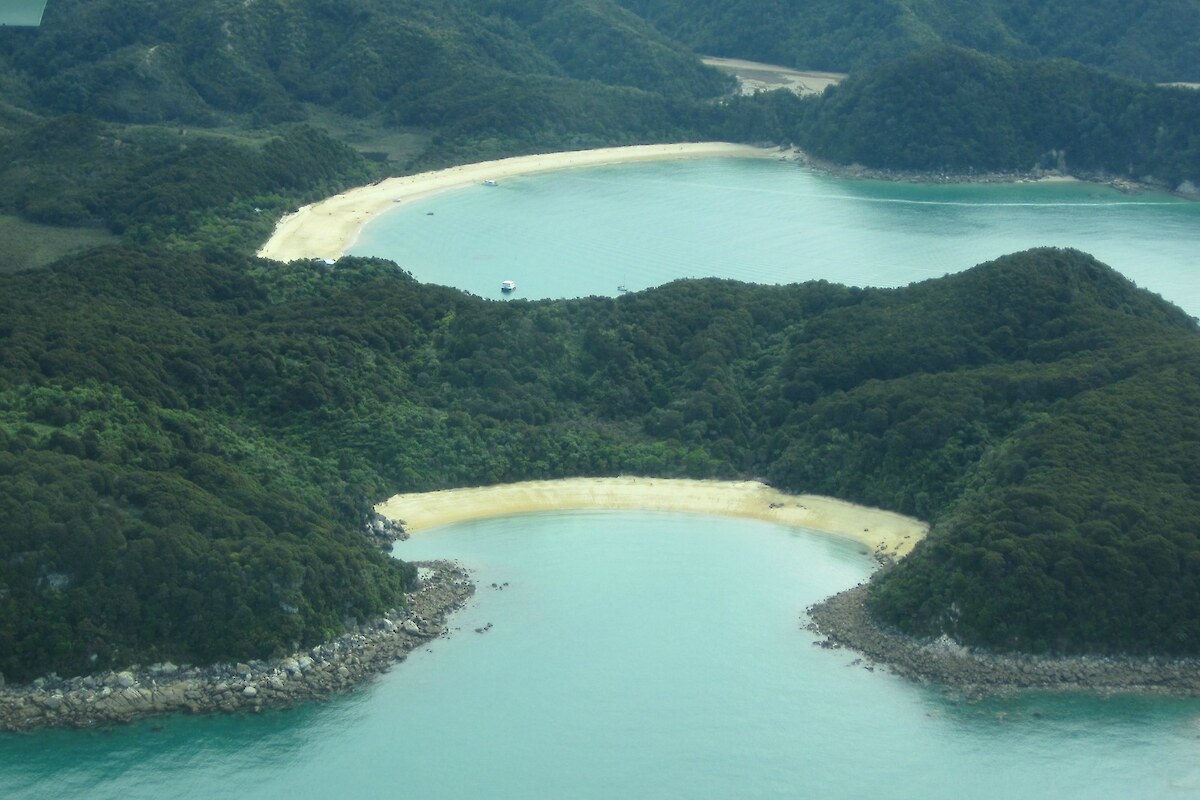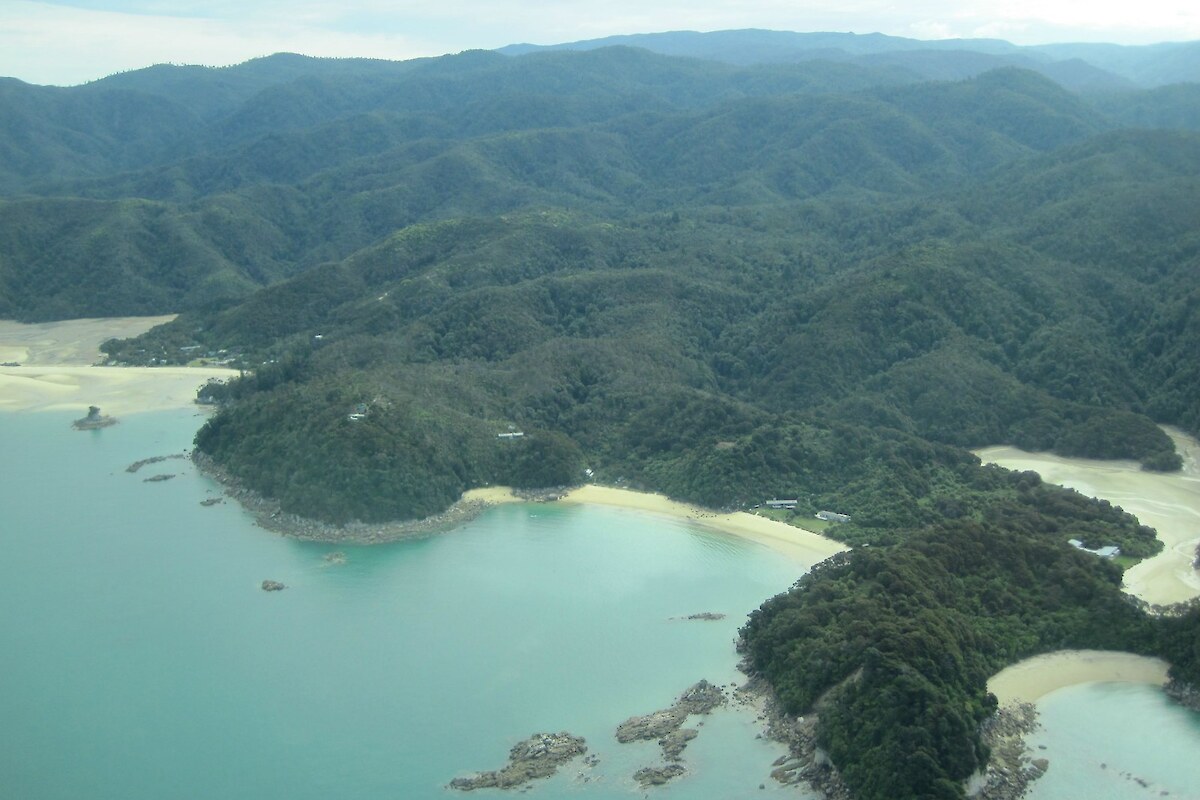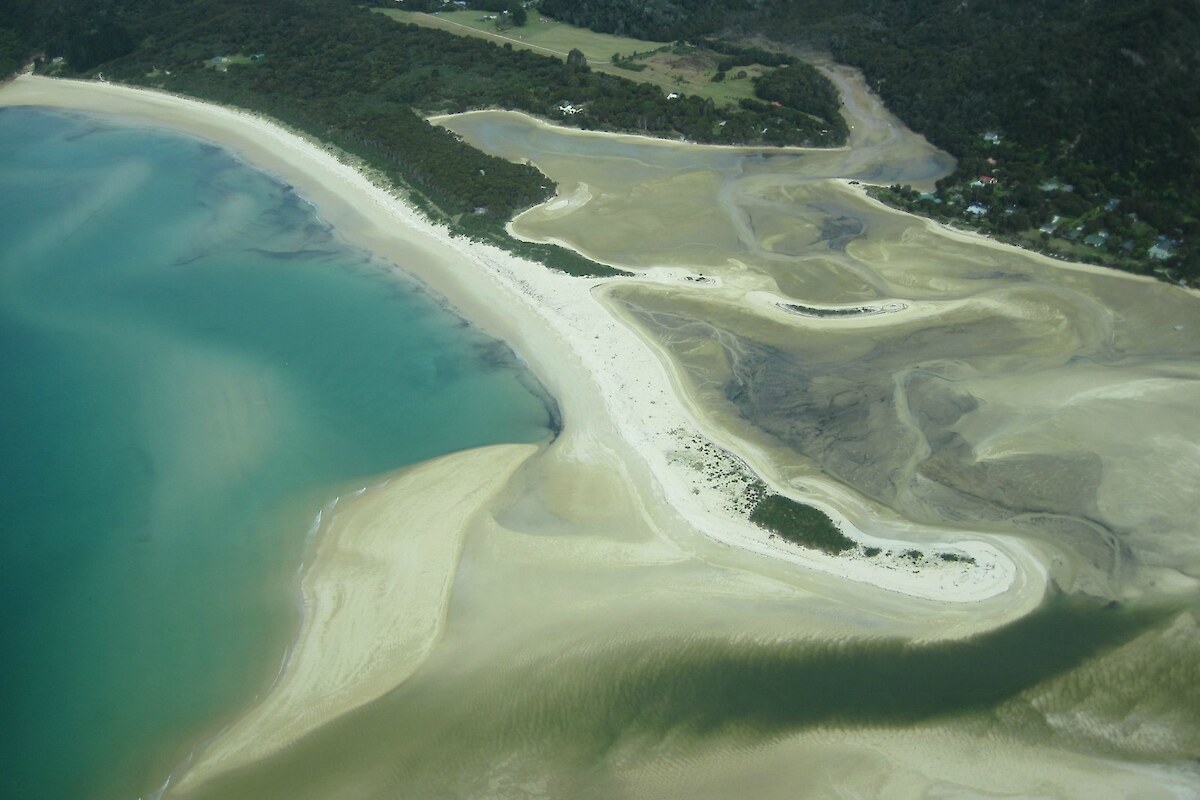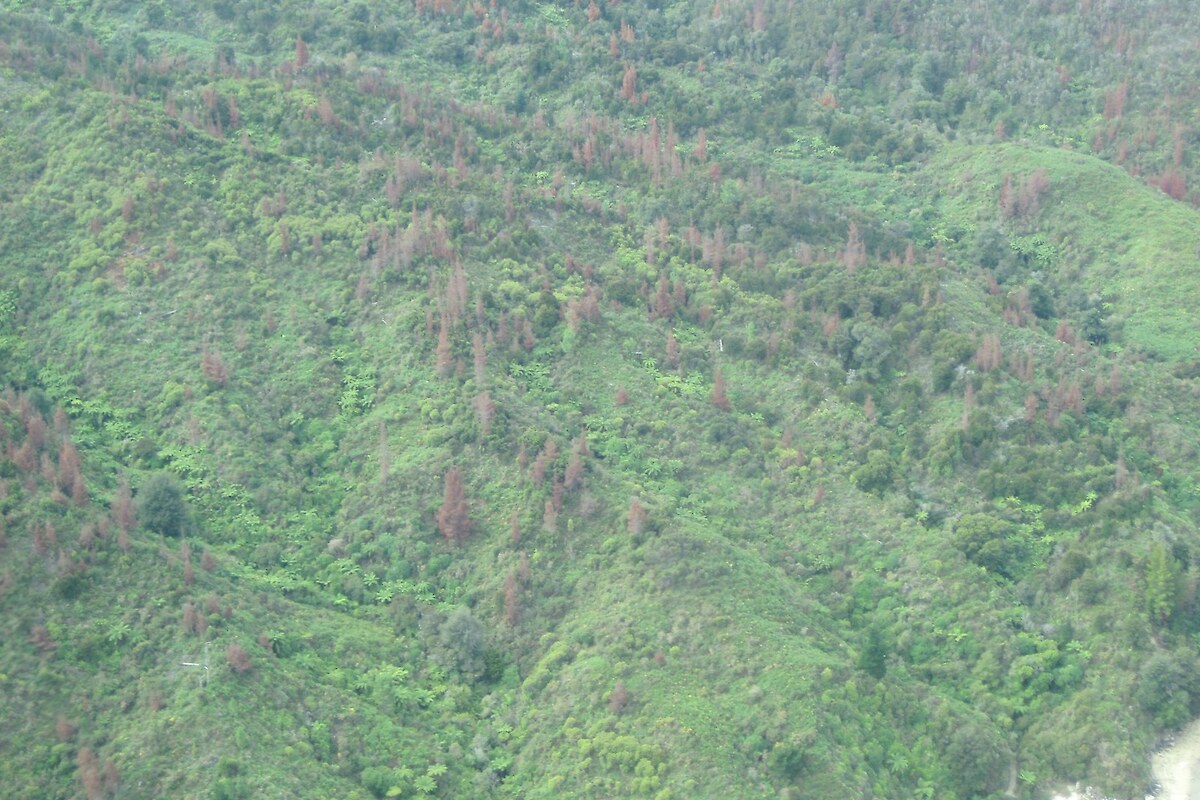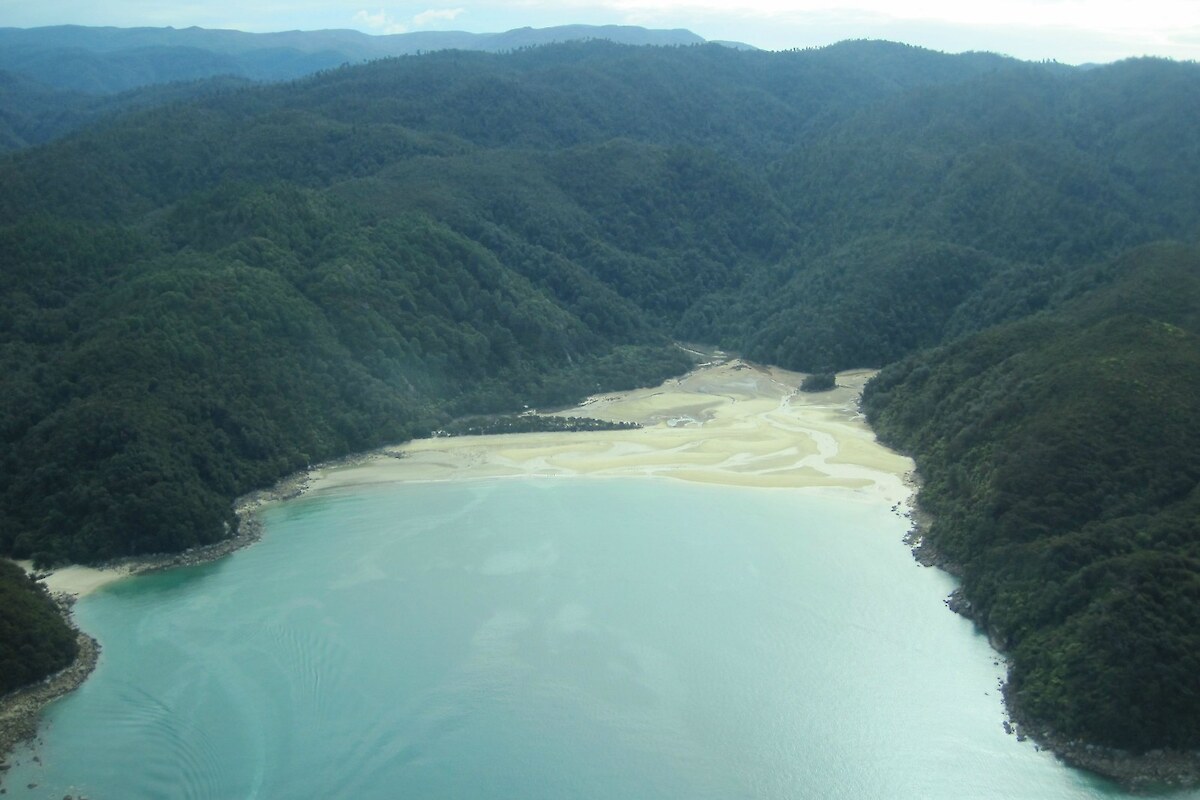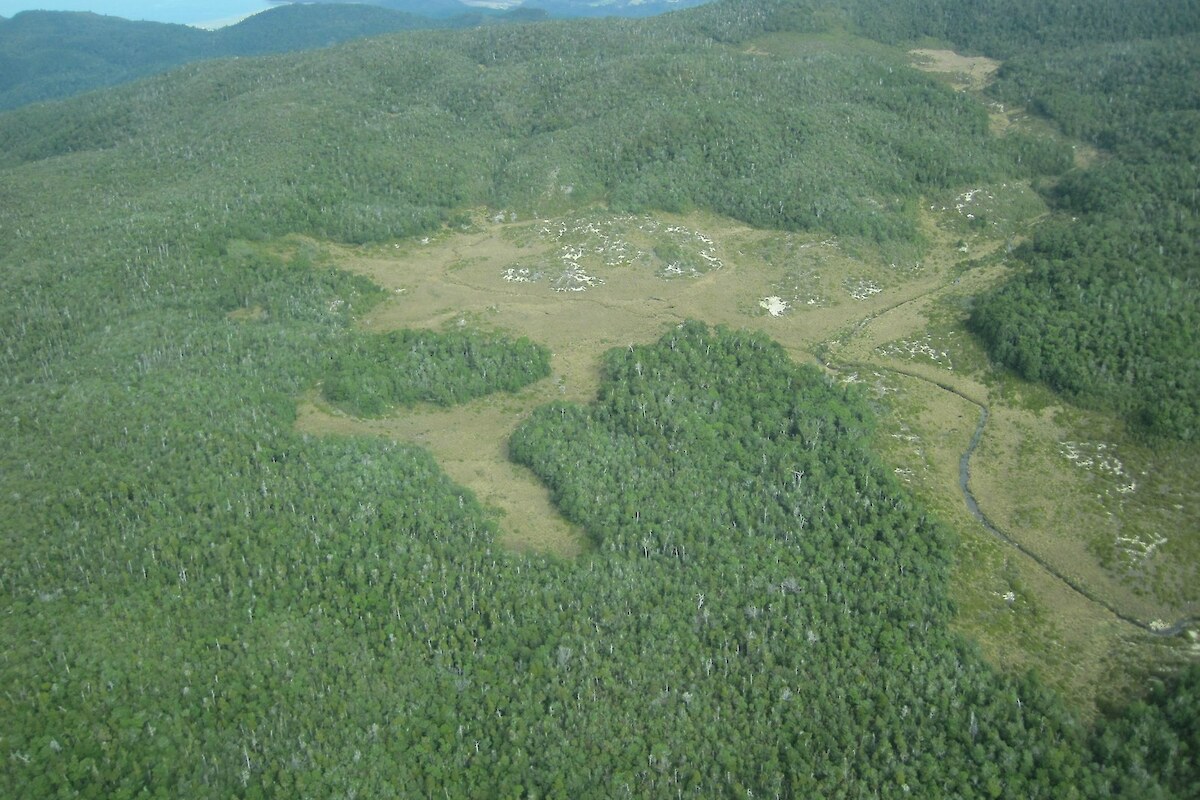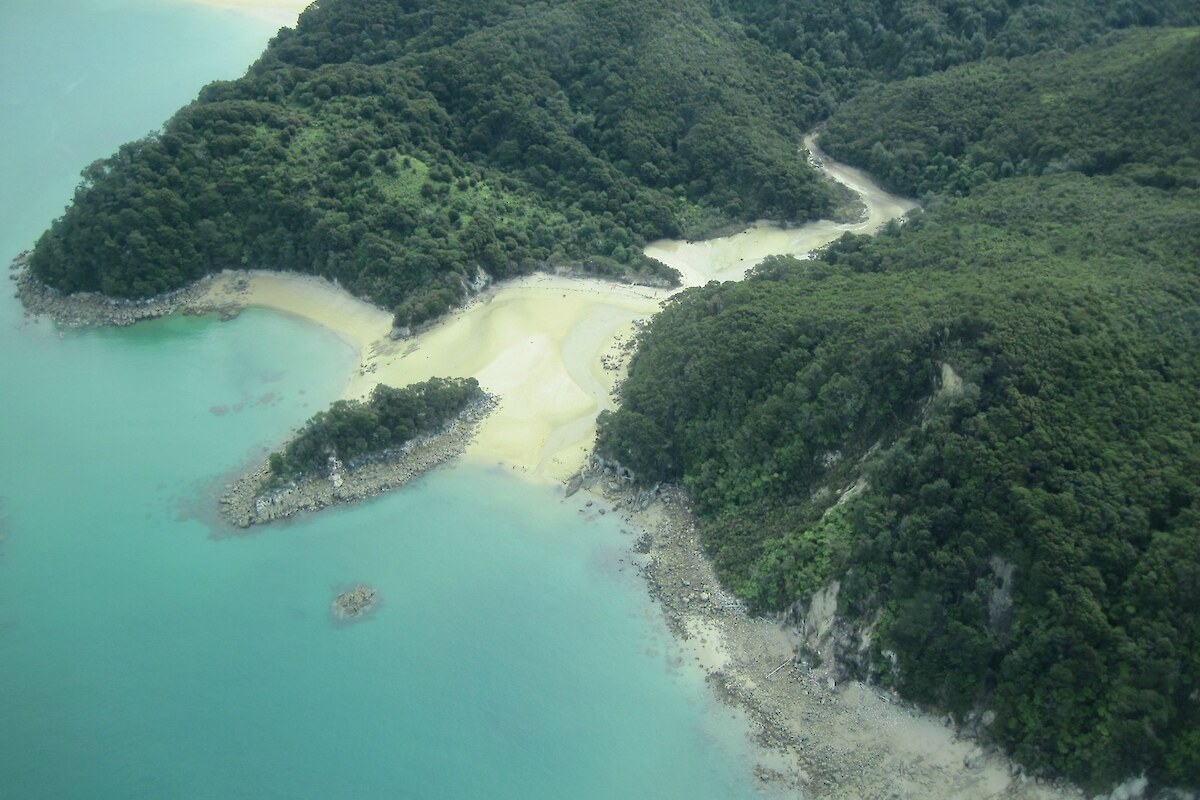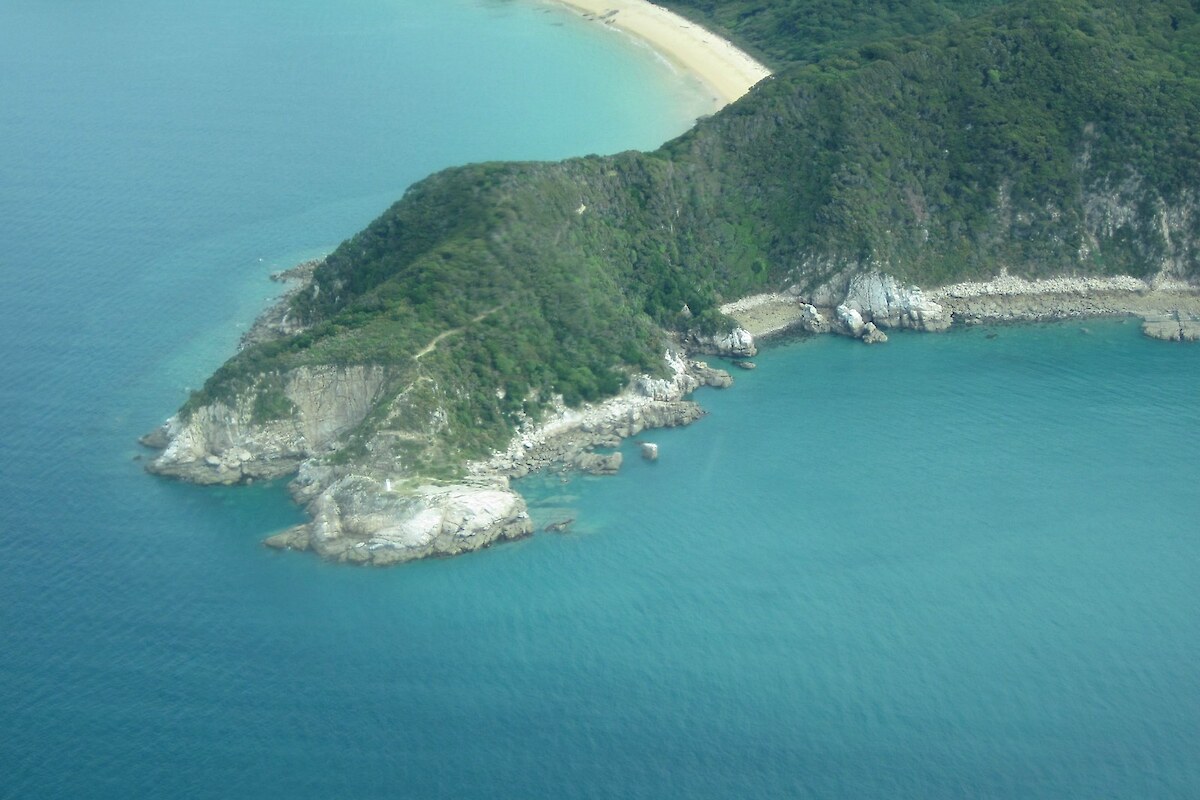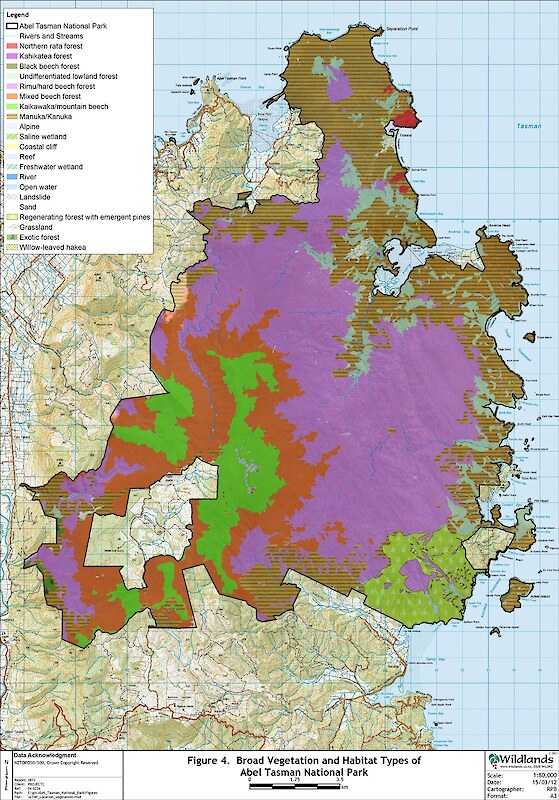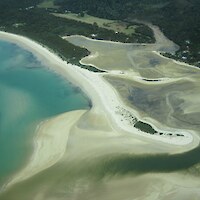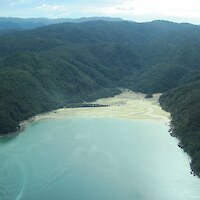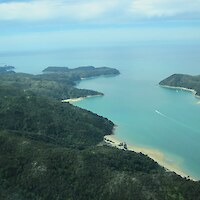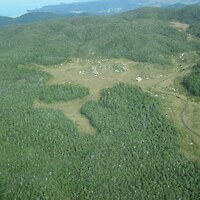The Project Janszoon Trust has initiated the early stages of a programme to undertake a significant ecological restoration project within part of Abel Tasman National Park.
In 2012, Wildlands staff prepared an Ecological Restoration Strategy that details a three-phase, 30‑year implementation programme aimed at securing existing biodiversity values, restoring ecosystems and future-proofing the project through relationship development. The aims are to be implemented by 2042, the 400th anniversary of Tasman’s arrival to New Zealand, and the 100th anniversary of Abel Tasman National Park. The strategy is accompanied by a separate detailed “resource” document that includes a definition, with appropriate justifications, of “key indicator species”; priorities for reintroductions of indigenous fauna; priorities for pest animal control operations, and rationale for weed control priorities.
Top level secure objectives over 2012-2016 encompass pest animal control, weed control (focussing on wilding conifers), surveys for missing faunal elements, and monitoring (the set-up of baseline monitoring for key indicator species). Top level restore objectives over 2013-2042 consolidate pest animal control gains of the secure phase, encompass site-specific restoration planning and implementation, extend weed control to Islands and to the targeting of selected weed species, and document the reintroduction of indigenous fauna to the Project Area. Future-proof objectives are largely beyond the scope of this Ecological Restoration Strategy, but the general principles of following best practice (including an adaptive management approach to operations) and fostering relationships and research are advocated throughout. To this end, a working list of Stakeholders was identified. In order to measure and celebrate achievements and progress towards meeting the strategy’s objectives, performance indicators with indicative dates are provided for each phase of the Project. The strategy includes a comprehensive list of potential constraints and issues, many of which may impact on the performance measures time-line. A review of the strategy, and the indicative timeline within, is recommended before 2022, or sooner if resources allow.


